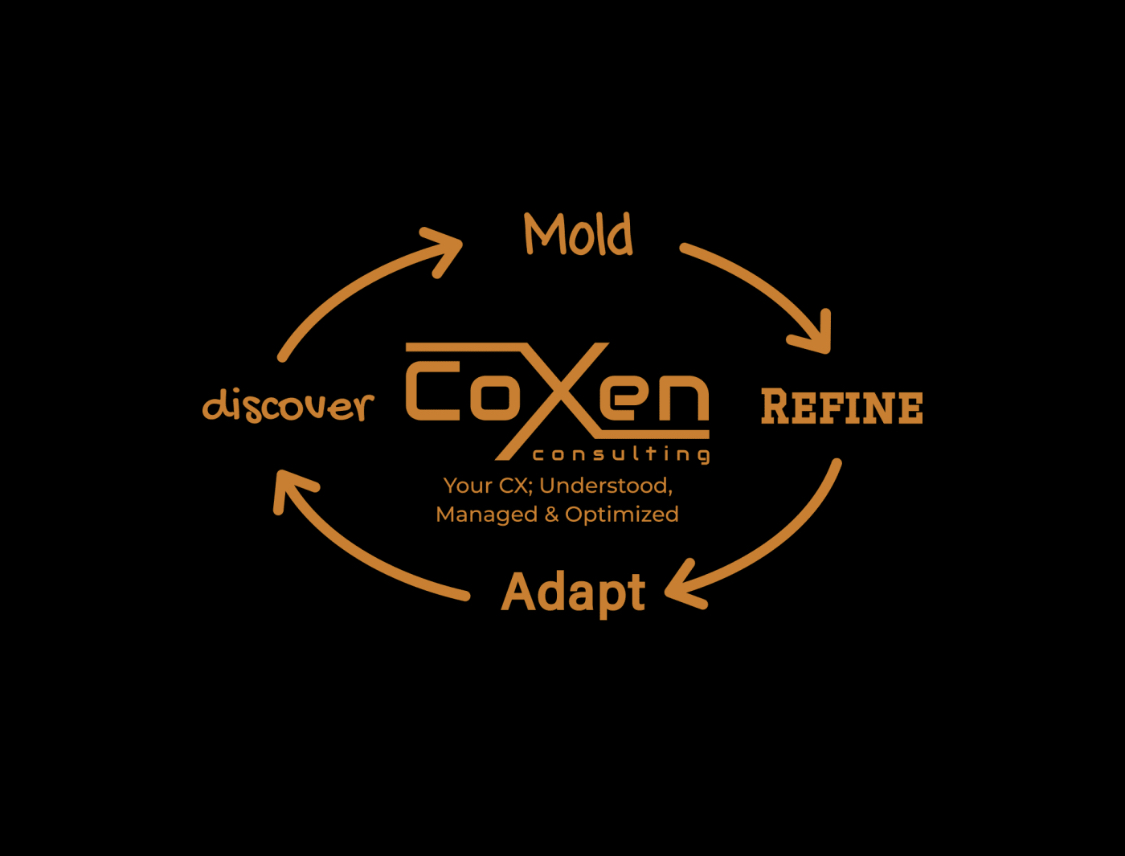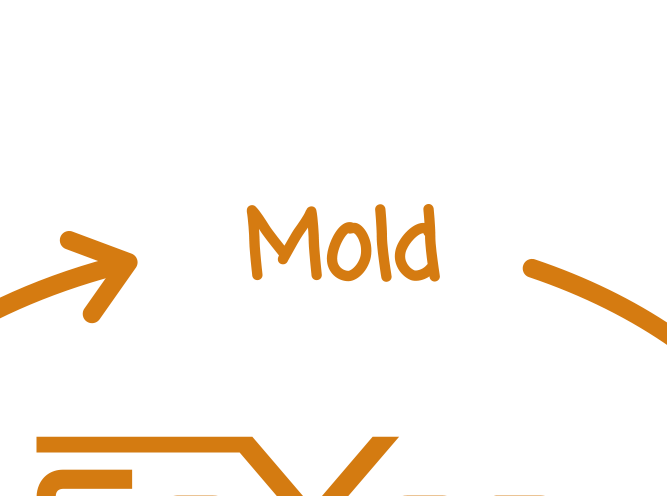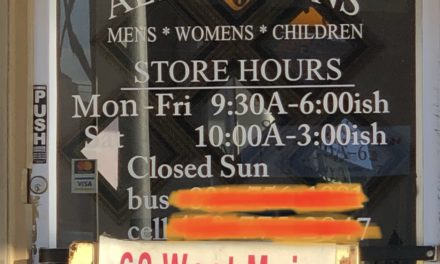
"Molding is little movements done well and measured well, to prepare for big moves and deleverage risks."
With the discovery phase of managing the customer experience, once you do an activity like writing an email survey, sending it out to customers and then getting the feedback and have that physical experience of discovering customer data, you’ll quickly become hooked and find all of the other opportunities that are around you waiting to be discovered.
The molding phase is quite a different mindset, if not almost exactly the opposite; as you’re probably doing it without knowing your doing it. The better and more natural you currently are at changing to customers needs the less likely you are at actually recognizing how much you are molding currently or have mold in the past. For example, my father runs a small shoe and saddle repair shop, mostly as a hobby. The shop is located behind his home. There are sidewalks or clear walkways to the shoe shop. In the winter months it is a little more treacherous to get back to the shoe shop. Recently I noticed a box in a covered area near the back porch to his home. It had several pairs of shoes and boots in it. I asked him what it was there for and he said for the winter months he was trying this out so people wouldn’t have to walk in the snow.
But to make it more convenient for him and others, people could just drop their needed repairs there and call him if it wasn’t clear what needed to be repaired. Once repaired, he’s just placed them back in the box, call the customer for them to pick up at their earliest convenience. I asked if people have complained about walking in the snow or if he had planned on doing it long term. He said he hadn’t thought much about it beyond the winter months.
Without boring him too much about what I thought was a perfect example of molding the customer experience, naturally and without formal discovery, I told him good job for thinking of his customers that way. Like most molding activities this is an example of subtle changes that are made with the intent to improve the customer experience with little to no long-term impact or ramifications on the customer overall. An organization that isn’t naturally or forcing itself to mold ends up missing out on many discovery opportunities.
Most discovery is done be observing your customers behaviors or asking for their feedback. This can get stagnant, feel fruitless and can easily promote the loss of executives interest if not managed well. When you have active molding of the customer experience going on it brings new life to your discovery. It is where you can try a lot of stuff out and is where hidden margin opportunities lie just waiting to be discovered. It is also where major infractions or long-term brand hits are avoided when used as a trial area.
Molding is much more of an art than a science. The organization needs to be very comfortable with the discomfort of molding the customer experience as is test things and pressures the common sense of “if it ain’t broke, don’t fix it”. It can feel similar to discovery efforts that lead to a less than specific change recommendations. But you must press forward with it.
Discovery becomes extremely important during the molding phase to ensure that you’re completely capturing the impacts and implications of the tweaks you are making to the customer experience during molding.
Molding is little movements done well and measured well, to prepare for big moves and deleverage risks. It can be a little bit dangerous for the organization who is loosey-goosey with the changes as they typically make big movements and don’t measure. They might have a few home runs but a lot more painful strike-out that someone who effectively uses the molding approach.
As you reflect on what is next for your organization and the customer experience overall please consider these things as you have the courage to tweak with and mold the customer experience a bit:
- Be comfortable with a fast fail, fast success mentality. Trust what you were seeing early on. If it’s not working chill it immediately. If you’re seeing positive outcome go ahead and tweak it a little bit more and on a bigger scale.
- Bone up on design thinking principles in general. Be comfortable with the fact that you are truly molding something here and it shouldn’t be perfect the first time you touch it. Use rough prototypes in a very safe settings. While being sensitive to brand ramifications, push yourself in the area of getting something out quick versus getting something out perfect.
- All molding exercises have a positive benefit. Whether you unearth the idea that adds a double-digit margin benefit or it’s the idea that you scrapped a month into the trial because it was a loser, both have huge benefits to your organization and leave you having confidence that you are and will be on the right path for your customer experience.
Take some time to reflect first on the safest areas of your customer experience to try and learn from with the molding exercise that allows you to learn more about where you need to be going next for your customer. Everybody is grateful to get on a plane and get to a destination 10 times faster then they could drive there, it’s a stroke of customer experience management genius when it is discovered how to get Wi-Fi on an airplane during that experience. Molding exercises Allow you to move beyond resting on your laurels of this is 10 times faster than driving and saying that’s good enough. Before, guess what, your competition is trying to find what’s the next best thing is and get there ahead of you.






What is being talked about…